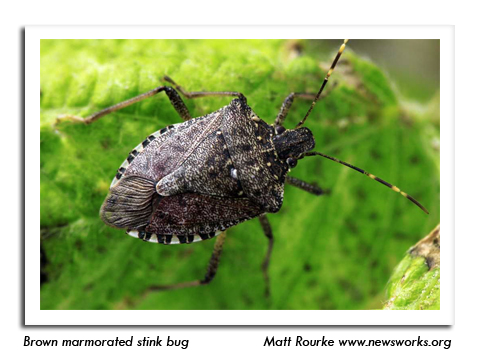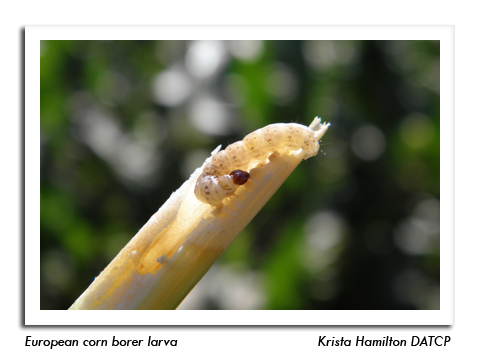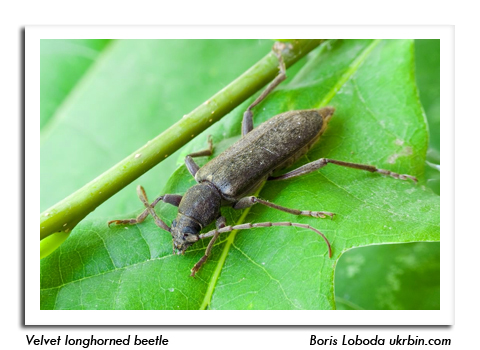Looking Ahead
Volume 65 Number 18 Date 11/12/2020
PEST HIGHLIGHTS OF 2020
CORN ROOTWORM - Beetle counts in southern and western Wisconsin increased substantially from the historic low levels of 2017-2019. The annual survey in August found higher populations in seven of the nine crop districts compared to last year, and a state average count of 0.6 beetle per plant, which represents a two-fold increase from 0.3 per plant in 2019. Approximately 27% of the corn sites sampled in August had above-threshold beetle pressure (>0.75 per plant). Larval root damage could be elevated across the southern districts next season.
BROWN MARMORATED STINK BUG - Chippewa and St. Croix counties were the only additions to the Wisconsin brown marmorated stink bug (BMSB) distribution map this season. Populations continue to be highest in the Madison, Milwaukee and Fond du Lac to Green Bay areas, although this pest's range has also expanded into western Wisconsin. As of November 12, BMSB reports have been confirmed from 34 of the state's 72 counties.
EUROPEAN CORN BORER - Larval populations once again remained extremely low. DATCP's fall European corn borer (ECB) survey documented a state average of 0.03 borer per plant, a minor increase from the all-time low average of 0.01 borer per plant found in 2019 and tying 2017, 2014 and 2012 for the third-lowest count since 1942. The main contributing factor to the consistently low ECB pressure is Wisconsin's continued high use rate of Bt corn, which accounted for 79% of planted corn acres in the state in 2020. This season marked the 25th year since commercialization of Bt corn.
VELVET LONGHORNED BEETLE - DATCP continued to gather information on the distribution of the velvet longhorned beetle (Trichoferus campestris) in Wisconsin. To date, 102 adult specimens of this exotic wood borer have been collected from 22 sites in six counties: Dane, Fond du Lac, Kenosha, Milwaukee, Rock and Waukesha. New county records in 2020 were established for Dane and Rock counties. The sites where this beetle have been detected are apple orchards and industrial areas. Additional information is provided in the FRUIT section.
WESTERN BEAN CUTWORM - The June-August trapping program collected a cumulative total of 3,789 moths in 58 traps, or 65 per trap. This average ties 2019 for the second highest count since surveys began in 2005 and is well above the 16-year average of 28 moths per trap. The survey record of 79 moths per trap was set in 2010. Localized damaging populations resulting from this summer's relatively large flight were observed in 6% of cornfields sampled in August and September, with the most severe infestations noted in Eau Claire, Green Lake, and Marquette counties.
LILY LEAF BEETLE - Range expansion increased considerably this year, with new records established in Brown, Calumet, Clark, Milwaukee, Outagamie, Vernon, Vilas, Waukesha, and Waupaca counties. First detected in Marathon County in 2014, lily leaf beetle (LLB) has now been confirmed in 21 Wisconsin counties. The adult beetles are bright red and conspicuous, while the larvae are found by inspecting Asiatic lily leaves for defoliation. The leaf damage caused by LLB larvae can be severe or even lethal to plants.
SPOTTED LANTERNFLY - Surveys for this pest on tree of heaven at 53 urban sites in Dane, Jefferson, Kenosha, Milwaukee, Racine and Rock counties, as well as on fruit trees and grape vines in 18 apple orchards and 12 vineyards, yielded negative results. Spotted lanternfly has not yet been found in Wisconsin.
-- Krista Hamilton, DATCP Entomologist
.jpg)



.jpg)
.jpg)


.jpg)



.jpg)
.jpg)